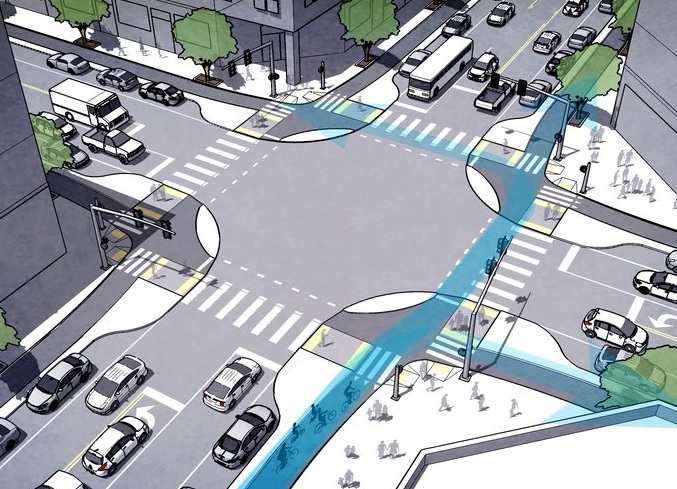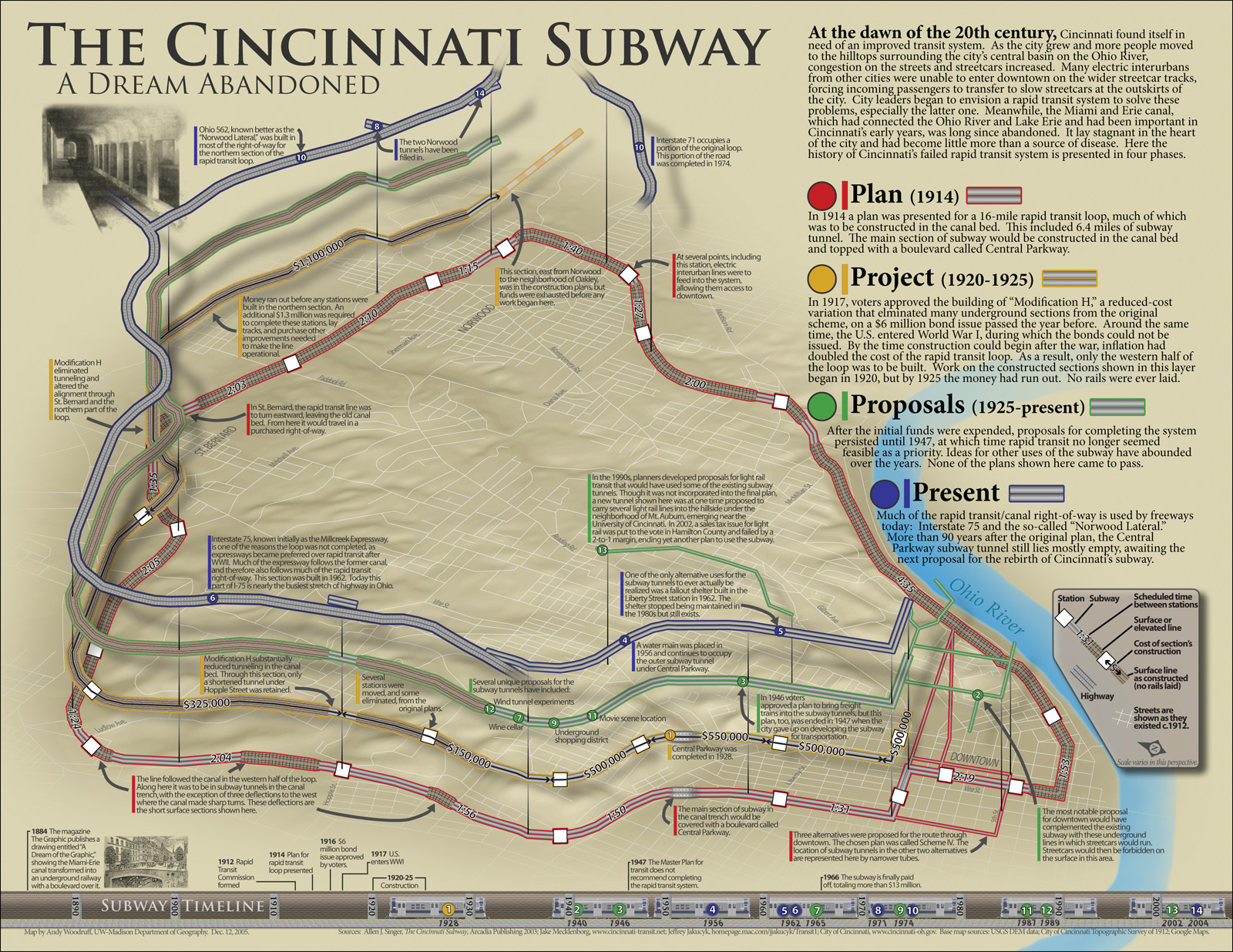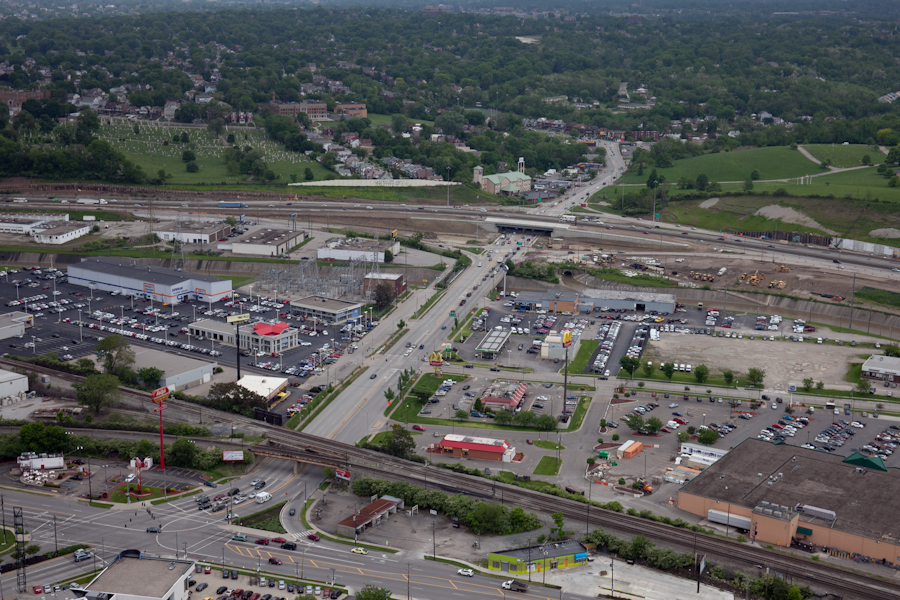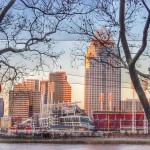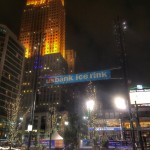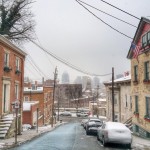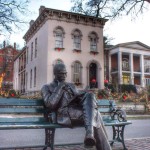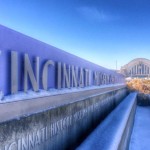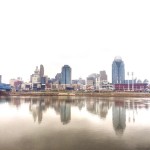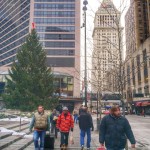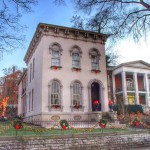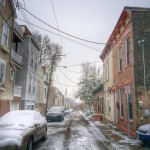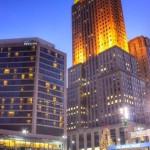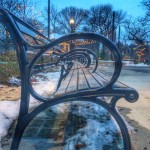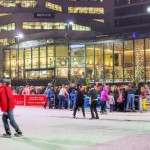On Thursday morning Mayor John Cranley (D) called a press conference for a “major” announcement. He was joined by leadership of labor unions representing city workers, along with Councilman Kevin Flynn (C).
So what was the big news? Well, Mayor Cranley had announced that he would be willing to continue the Cincinnati Streetcar project that has already received direct voter approval twice, support of City Council, appropriated funds for its entire project cost, and began construction, if streetcar supporters could come up with a private funding commitment that would cover all operating costs for the first phase of the system over the next 30 years.
Oh yeah, and he asked that those boosters kindly secure that $60-80 million commitment in one week’s time.
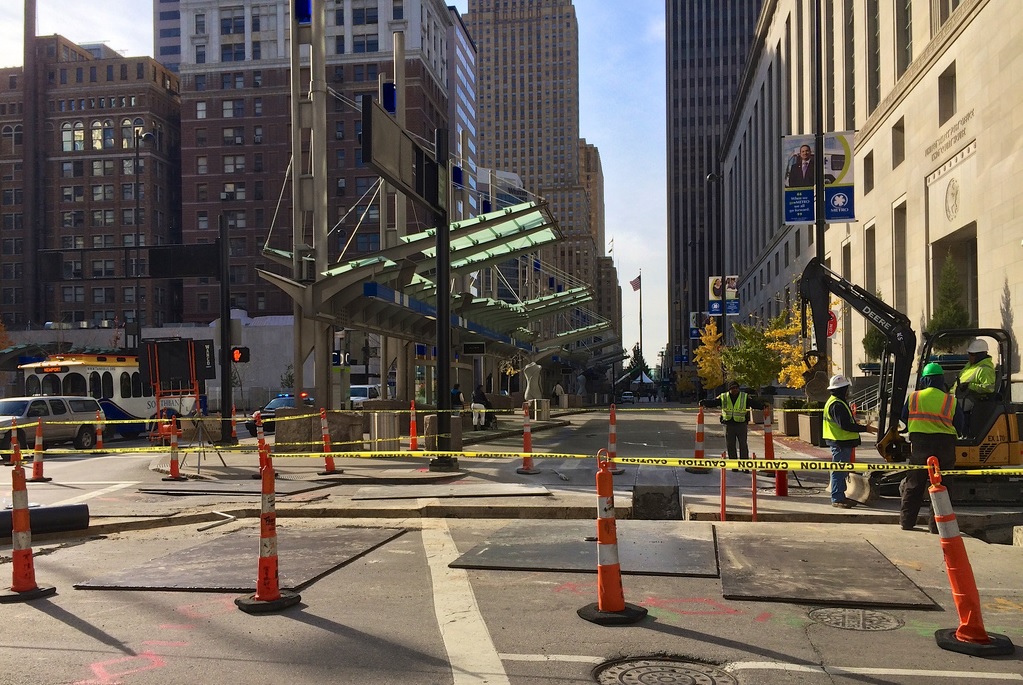 Utility relocation work proceeded near Government Square on November 16, but whether that work will ever resume is up to Mayor Cranley and Councilmembers David Mann and Kevin Flynn. Photograph by Travis Estell for UrbanCincy.
Utility relocation work proceeded near Government Square on November 16, but whether that work will ever resume is up to Mayor Cranley and Councilmembers David Mann and Kevin Flynn. Photograph by Travis Estell for UrbanCincy.
Aside from the unprecedented request, a first of its kind for any transit program in America, it is troubling for two other key reasons. First, it sets a dangerous new precedent for how city government operates in Cincinnati, and secondly it is an obscene double standard for transit projects to force such a financial commitment.
Dangerous Precedent
With labor union representatives at his side, Mayor Cranley continually stated how he has an obligation to deliver the basic services we all cherish, and said that Cincinnati has a difficult enough time meeting current financial liabilities, much less new ones. As a result, he demanded that the private sector and streetcar supporters, should they actually support the project, put their skin in the game and fund its operations for the next 30 years.
That is all great campaign rhetoric, which Cranley used brilliantly leading up to the November 5 election, but it is completely irrational.
If the City of Cincinnati cannot afford any new financial liabilities, then will Mayor Cranley and his administration be requesting operating plans and financing for those new efforts from anything that comes to his desk? He has stated he wants to hire 200 new police officers, but who will shoulder the ongoing financial liability that will place on the City’s operating budget? Cranley has said he does not want to raise taxes, so that leaves only making cuts elsewhere to free up money for such a huge expansion of public safety forces.
Being and true and blue west sider that Mt. Lookout resident John Cranley is, he also supports the proposed Westwood Square project. While UrbanCincy also wholeheartedly supports that project and the form-based code it was borne out of, we have never seen a financing plan for it or any estimate for what its ongoing costs will be to the City. If “no new liabilities” means “no new liabilities” then we are concerned that Mayor Cranley’s new approach to governance will jeopardize the Westwood Square project.
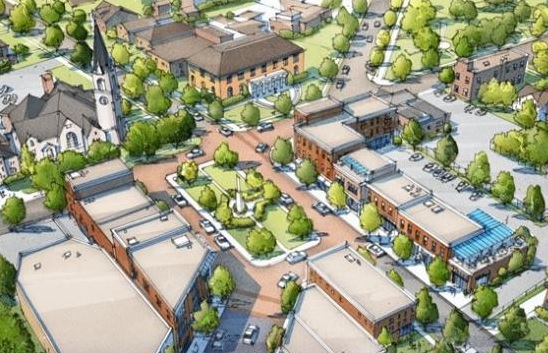 Mayor Cranley’s dangerous new precedent might put the advancement of such projects as Westwood Square at-risk. If not, it would create a massive double standard. Image provided.
Mayor Cranley’s dangerous new precedent might put the advancement of such projects as Westwood Square at-risk. If not, it would create a massive double standard. Image provided.
In addition to the Cincinnati Streetcar, 200 new police officers and Westwood Square, this new heavy-handed approach will also jeopardize the Wasson Way Trail, future phases of Smale Riverfront Park, improvements to the city’s waste collection operations, the rebuild of the Western Hills Viaduct, completion of the Ohio River Trail, and development of the Eastern Corridor. This new standard will also put at risk what the Cranley Administration seems to hold as the Holy Grail of all local projects – the MLK Interchange.
Should we also expect a move by the Cranley Administration to stop all construction activities and spending on the Waldvogel Viaduct that is currently being rebuilt? That project has never submitted a financial report that estimates a 30-year operating cost, much less any private sources to cover those ongoing financial liability costs.
Double Standard
UrbanCincy certainly hopes that this is in fact not a new standard protocol at City Hall, because it will put a stop to virtually everything the City does and bring the delivery of public services to a screeching halt. If that is the case, then Mayor Cranley’s olive branch to streetcar supporters is nothing more than a massive double standard.
Virtually every project the city undertakes adds liability costs. The Parking Modernization & Lease plan would have, of course, added none and in fact reduced future liability costs, but Mayor Cranley and his administration were quick to kill that deal as well.
And while this move by Mayor Cranley is typical of anti-transit forces around the country, it is also unacceptable. The user fee for roadways – the federal gas tax – has not been raised since 1993 and covers approximately 51% of the annual costs of maintaining our roadways. Public safety departments collect nowhere close to the amount of revenue they demand in terms of their costs to operate. Our schools, libraries, cultural institutions and parks all require taxpayer support, but such demands are not placed on them, nor should they.
Had Smale Riverfront Park been mandated by Mayor Cranley’s administration to provide 30 years’ worth of operating funds upfront in binding agreements before he approved any capital dollars for it to get started, then that project would most likely still not be started to this day. Instead, under normal governance, Smale Riverfront Park moved forward with its construction, and then capable leaders such as Willie Carden, Jr. were tasked with developing innovative and sustainable mechanisms to fund in over its lifespan.
It is unfortunate the Mayor Cranley and his administration have cornered Cincinntians into this position. It is unreasonable to ask our business community to fund public projects that should be funded by the public agency that committed to doing the project in the first place. Fortunately Cincinnati has proactive thinking leaders like Eric Avner and the Haile/U.S. Bank Foundation working to meet the unreasonable demands of Mayor Cranley.
But should the business community deliver on this unreasonable request to fund the project’s operations for the next 30 years; then those investors should receive the returns the investment generates. The same is true if city residents want only those along the line to pay for its operations. If the costs must be localized, then so should its benefits.
Quite simply, residents elsewhere in the city who do not want to take on any risk deserve none of the returns.
The center city already subsidizes the public services provided to the city’s neighborhoods. If Mayor Cranley wants to continue on this damaging path of pitting neighborhoods against one another, then we will all quickly realize just how much we are dependent on one another economically.
In 2011, for example, the City of Cincinnati collected 71% of all city tax revenues from just eight neighborhoods: Downtown, Over-the-Rhine, West End, Queensgate, CUF, Corryville, Avondale and Clifton – collectively and colloquially as “Downtown” and “Uptown”.
The health and success of Downtown and Uptown is critically important to the overall health and success of the entire city. While many residents may believe that too much is invested in those areas, the reality is that those eight neighborhoods pay far more in taxes than they ever receive.
UrbanCincy is calling for an end to the divisiveness and to fully invest in our city’s future. Finish the Cincinnati Streetcar.
